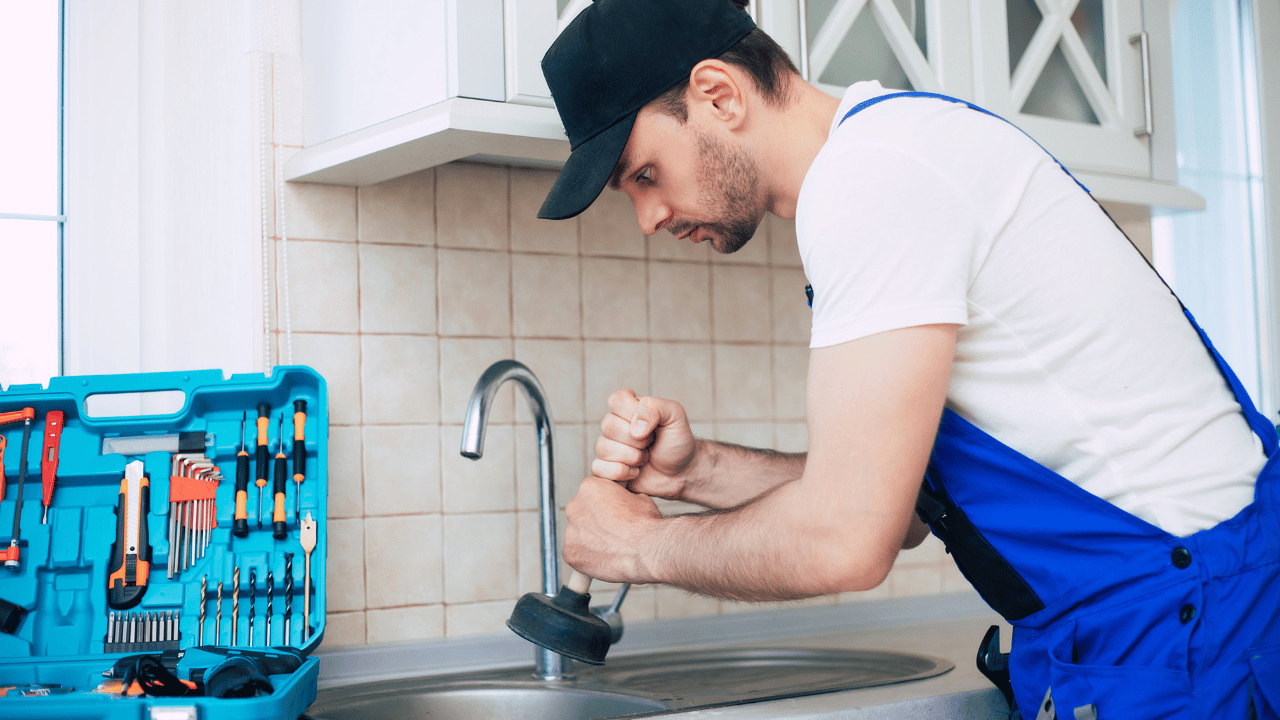Last Updated on October 10, 2023 by Pro Handyman Australia – Editorial Team
Every homeowner, at some point, will find themselves faced with the dripping of a leaky faucet, the challenge of a clogged drain, or the mystery of a running toilet. These are but a few of the myriad plumbing issues that crop up in households around the world. Our homes’ intricate plumbing systems, although built to last, are not immune to wear, tear, and occasional hiccups. In this blog, we delve deep into the realm of common household plumbing problems, exploring their causes, effects, and, most importantly, solutions. Whether you’re a seasoned DIY enthusiast or someone who’s just trying to understand what’s going on beneath your sink, this guide promises insights and advice to help you navigate and address these watery woes. Join us as we journey through the pipes and drains of our homes, shedding light on the most common plumbing predicaments.
Your Comprehensive Guide to Common Plumbing Problems and Effective Solutions
Navigating the world of household plumbing can be intimidating, especially when unexpected problems arise. Fear not! In this comprehensive overview, we’ll delve into some prevalent plumbing issues, how to identify them, and the solutions to tackle them efficiently.
Pesky Dripping Faucets
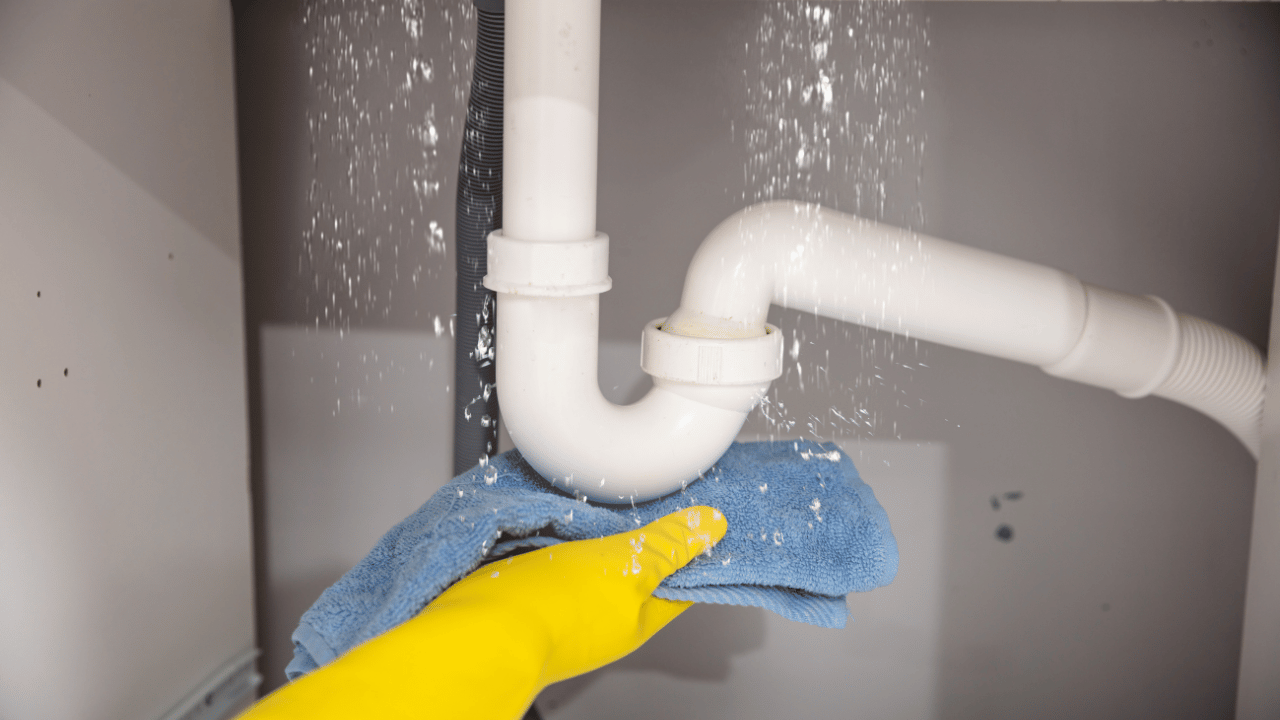
Nothing can be quite as irksome as the continuous drip-drip sound of a faucet. The root cause of this annoyance often stems from worn-out washers or a loose connection within the piping system. Yet, another frequent offender is a clogged aerator, which can become blocked by mineral deposits over prolonged use.
Solution Steps:
- Begin by replacing any deteriorated washers and tightening any slack connection points.
- For problems related to a congested aerator, consider either cleaning or replacing it. Removal, thorough cleaning, and correct reinstallation can sometimes do the trick.
The Frustration of a Slow Draining Sink or Tub
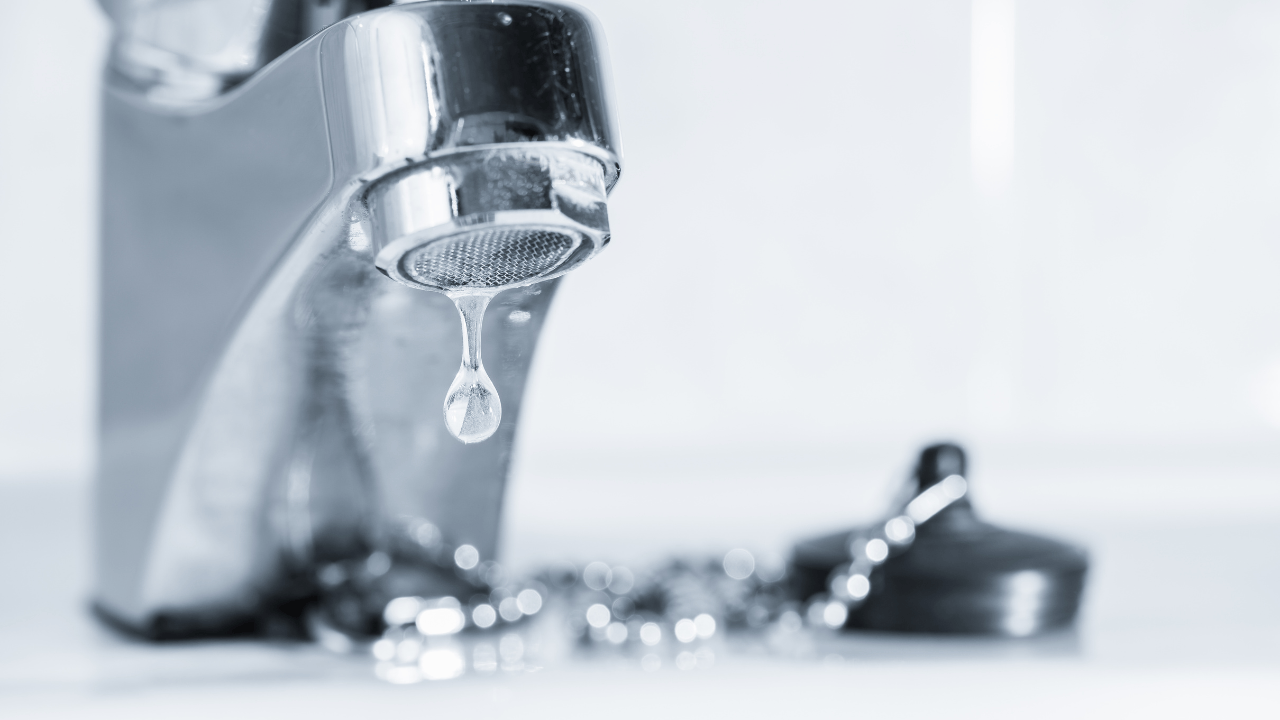
When your sink or tub takes forever to drain, it’s likely pointing to a blockage. Culprits can range from the mundane, like accumulated hair and grease, to the more complex, such as tree roots invading underground pipes.
Solution Steps:
- For straightforward blockages, a good old-fashioned plunger can clear the obstruction.
- If the blockage is further down the pipeline, consider using a drain snake or auger to dislodge the obstruction.
- While chemical drain cleaners offer a quick solution, their corrosive nature means they should be a last resort and used with great care.
Navigating the Challenge of Leaky Pipes
A leaky pipe isn’t just an inconvenience; it can hint at deeper plumbing issues. Aging pipes, corroded joints or seals, or even external factors like tree roots or extreme temperatures can be the instigators. Before diving into repairs, a thorough inspection to spot any visible damage is crucial.
Solution Steps:
- If the leakage source is evident, like a compromised joint or seal, a direct repair or replacement might be in order.
- For more complex issues hidden within the infrastructure, professional help is advisable.
- Recognizing the pipe’s material type is essential. With that knowledge in hand, solutions can range from applying epoxy to joints, substituting old pipe sections, or adjusting fixtures and clamps to secure a watertight system.
Always remember, when in doubt or if the problem persists, consulting a professional plumber ensures the longevity and health of your plumbing system.
Resolving Running Toilets
Running toilets can be a significant concern for homeowners, not only because they waste water but also because they can lead to expensive utility bills. This issue frequently arises from a malfunctioning toilet flapper valve which results in perpetual water flow into the bowl.
Identifying the Issue: Several factors might contribute to a running toilet. This could stem from a faulty flapper valve, an aged flush valve seal, or an obstructed fill tube. Additionally, problems may arise from a damaged lift chain, float ball, or fill tube shutoff. Before jumping into solutions, it’s crucial to inspect these components to pinpoint the root cause.
Solution Steps:
- Begin by examining the flapper valve situated at the tank’s base. If it fails to close properly, continuous water flow into the toilet bowl can result. Address this by cleaning both the flapper and the flush valve seat, ensuring they operate smoothly.
- Next, ensure the lift chain, which links the flapper to the handlebar, is well-attached and unobstructed. In some instances, replacing particular components like a damaged float ball or fill tube shutoff might be necessary.
Tackling Clogged Toilets
Clogged toilets, a bane for many homeowners, usually arise from inappropriate items being flushed. This can range from disposable wipes to even toys. In some situations, clogs result from excessive toilet paper use or inadequate water levels during flushing.
Identifying the Issue: There could be several reasons for toilet clogs. These range from foreign objects in drainage pipes, malfunctioning tank components, or water levels too low to allow efficient flushing.
Solution Steps:
- Ensure the bowl’s water level is optimal and free of residual material.
- Using a plunger can create the necessary pressure to clear obstructions. After plunging, inspect the bowl’s base, or the p trap, to remove any remaining debris.
Addressing Low Water Pressure
Experiencing low water pressure can be attributed to a myriad of factors, from extensive water usage in the house to issues like blocked or damaged pipes.
Identifying the Issue: Potential culprits include mineral deposits in pipes, trapped air bubbles, and even plumbing fixture leaks.
Solution Steps:
- Start by checking faucets and hoses for obstructions. Cleaning out potential blockages can restore water pressure.
- Aerators, when clogged, can hinder water flow. Ensuring they are clean can be beneficial.
- To understand the gravity of your water pressure issue, use a pressure gauge. Ideally, household water pressure should be between 30 to 80 psi. If it surpasses 80 psi, get in touch with your local water utility.
- Lastly, detecting and addressing plumbing leaks is paramount for pressure restoration.
Addressing a Leaking Hose Bib
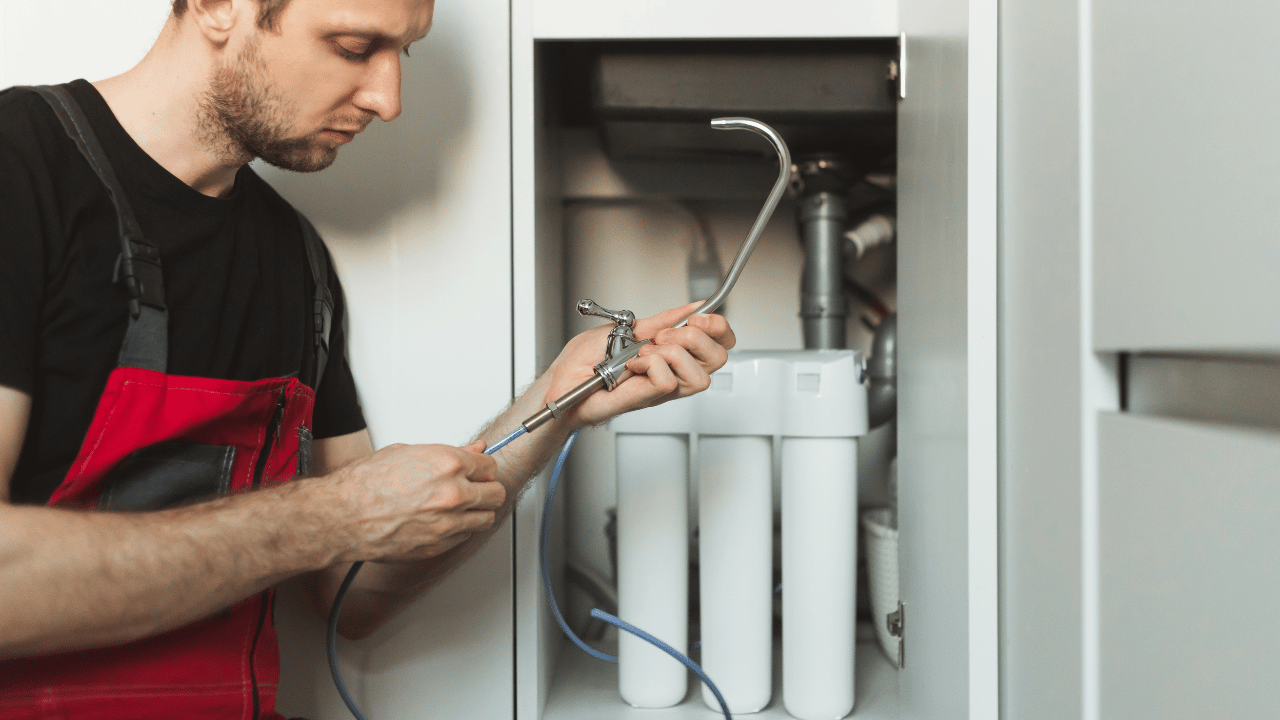
One common household plumbing issue is the leaking hose bib, often resulting from malfunctioning valves, either due to wear and tear or outright damage. Such leaks not only lead to water wastage but can also damage surrounding structures due to prolonged exposure to moisture.
Diagnosis and Solution:
- Start by inspecting the valve and the adjacent piping to pinpoint the leak’s source.
- A problematic valve can generally be replaced with ease.
- Ensure that all connections are tight to prevent drips.
- In some instances, it might be necessary to substitute old or corroded pipes to address the leakage.
Dealing with Slow or Clogged Drains
Drainage issues, specifically slow or clogged drains, frequently arise due to accumulated debris, such as hair and soap scum, within the pipes. If neglected, this accumulation can severely hamper water flow, escalating to complete blockages. Factors like worn-out pipes or foreign objects lodged within can also contribute to these issues.
Diagnosis and Solution:
- A plumbing snake can be a handy tool to dislodge any obstructions within the drain line.
- For resilient blockages, employ a plunger to exert pressure and restore water flow.
- In cases of stubborn clogs, chemical solutions can be beneficial. However, always handle such substances with care due to their corrosive nature.
- Safety Precaution: Exercise extreme caution when using potent chemicals as they can be highly corrosive.
- To preemptively tackle drain issues, consider incorporating a drain guard, especially in showers.
Tackling Sump Pump Failures
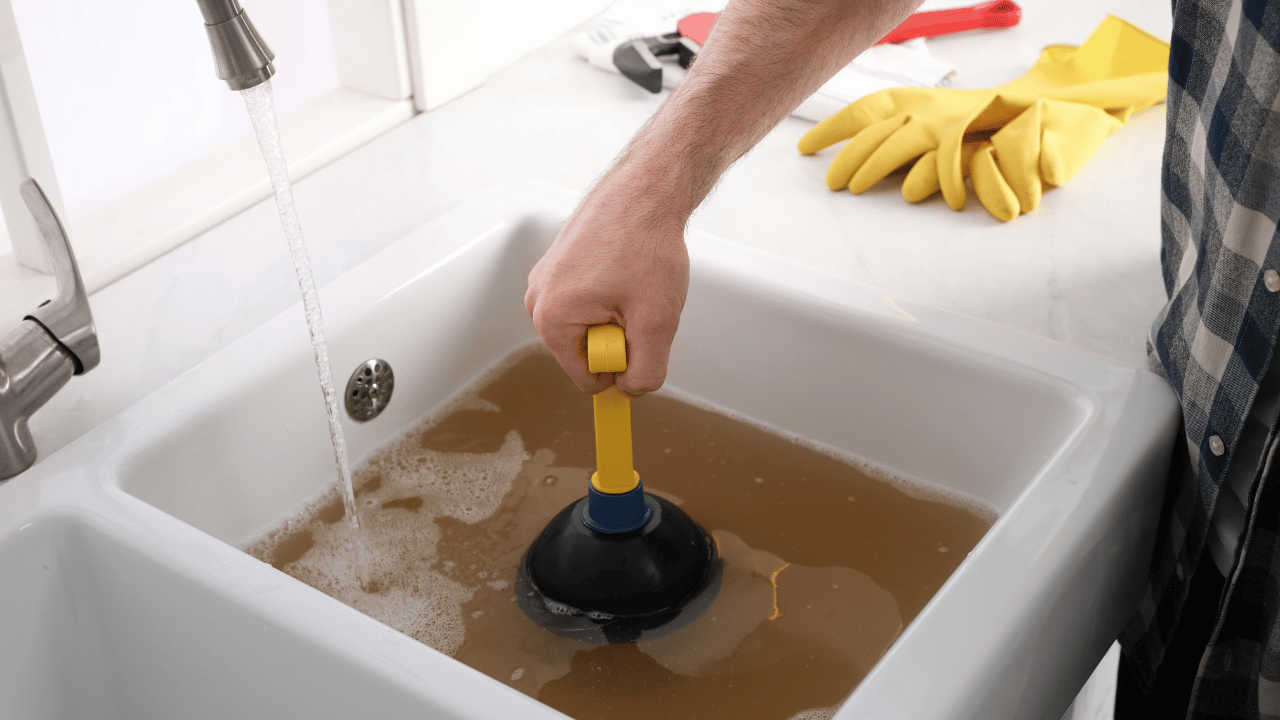
Sump pump failures are multi-faceted, influenced by factors ranging from power disruptions, blocked sump discharge pipes, and debris hindering the sump’s inlet or outlet, to issues like broken water lines or inadequate upkeep.
Diagnosis and Solution:
- First and foremost, discern the root cause of the failure.
- In the event of a power outage, once the power is restored, ascertain if the sump pump is functional.
- Employ tools like a sewer snake to free the sump discharge pipe of any clogs.
- Ensure that the sump’s inlet and outlet are devoid of any obstructions.
- Damaged water lines might necessitate intervention from a professional plumber.
- Regular maintenance, encompassing tasks like motor lubrication and corrosion checks, is paramount.
- Ensuring a clear space around the sump pump can mitigate overflow risks.
Navigating Hot Water Heater Complications
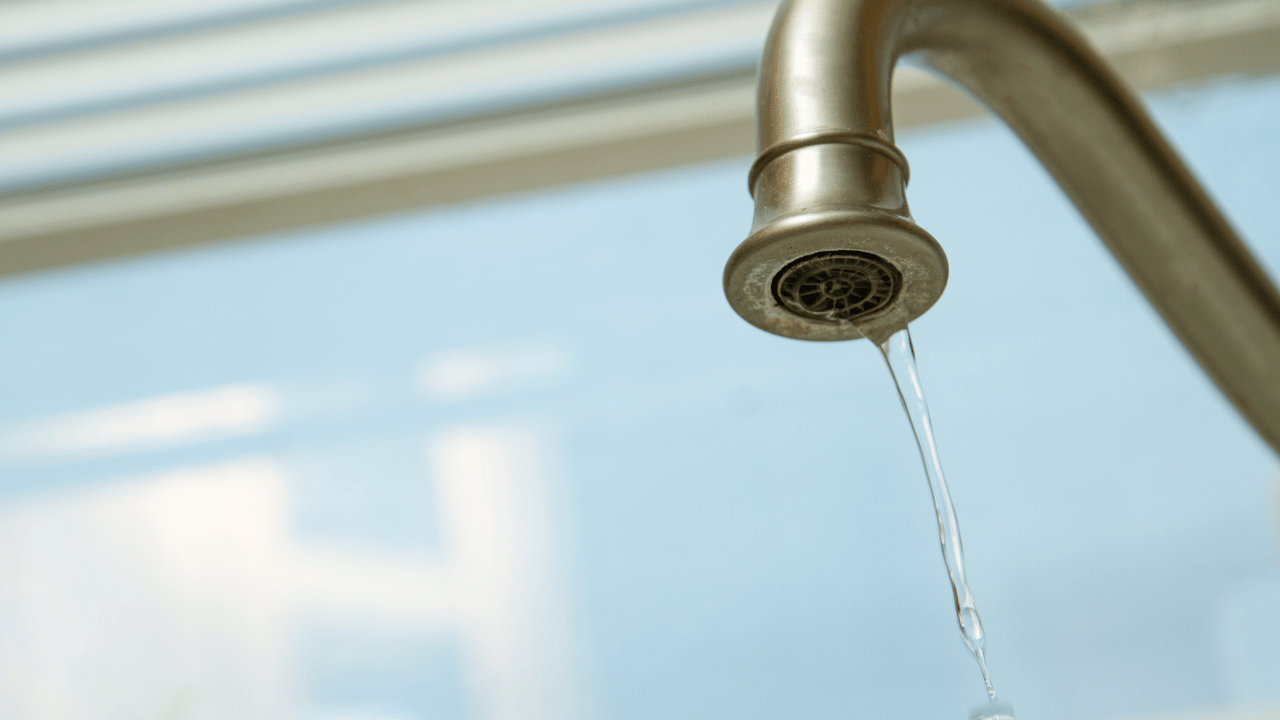
Water heaters are fundamental to every household, but they are not exempt from potential malfunctions, including leakage, rust formation, inconsistent hot water supply, and temperature discrepancies. A range of faulty components such as the heating element, thermostat, or pressure relief valve might be the culprits. Furthermore, a lack of routine maintenance, such as draining and flushing, can lead to mineral deposit accumulation, which could jeopardize the heater’s efficiency.
Resolution Tactics:
- Begin with a thorough examination of the heater for signs of leaks, rust, or corrosion.
- Check for potential obstructions in the connecting pipes.
- If the root cause remains elusive, consider seeking expert assistance.
- After identifying the issue, some problems might be solvable with the right tools and replacement parts, which are available at most plumbing stores.
- Drain and flush your system if sediment build-up is noticeable.
- Ensure proper ventilation and maintain a clearance around the heater to optimize air circulation.
Handling Main Water Line Disruptions
Breakages in the main water line are often a result of underground pipe degradation, which could stem from age, environmental factors, or even intrusive tree roots. Symptoms of such a problem can range from anomalous noises in the drainage system to unexpected yard puddles.
Resolution Tactics:
- Initially, identify the compromised pipe and separate it from the home’s plumbing.
- Turn off the main water supply to prevent any further leakage.
- It’s paramount to consult a professional for a thorough assessment and necessary repairs, which might involve pipe replacements or installation of new segments.
Addressing Sewer System Backlogs
Sewer system backups can create messy, unsanitary conditions. Often caused by blockages from accumulated debris, excessive rainwater, or even ground shifts around the pipes, these issues require immediate attention.
Resolution Tactics:
- Utilize specialized equipment, such as inspection cameras, to locate the obstruction.
- Depending on the damage’s severity, the plumber might clear obstructions, replace broken sections, or introduce new pipes.
- In some scenarios, chemical treatments can assist in dissolving stubborn blockages.
Deciphering Basement Water Stains
Basement water stains indicate moisture intrusion, often resulting from wall, floor, or foundation cracks. Unaddressed, they can escalate to mold growth. Moreover, plumbing malfunctions or poorly sealed windows can further aggravate the situation.
Resolution Tactics:
- Tackle any structural breaches immediately using appropriate sealants.
- Identify and rectify plumbing leaks promptly.
- For moisture-laden environments, incorporate a dehumidifier to control humidity levels.
Managing Garbage Disposal Glitches
Jammed garbage disposals can be more than a mere inconvenience. Their malfunction can be attributed to foreign objects, electrical issues, or even the unit’s age.
Resolution Tactics:
- Ensure the unit is properly connected to the power source.
- With the unit unplugged, manually clear any obstructing objects from the grinding chamber.
- To tackle accumulated debris, use suitable tools to clear the chamber.
- As a preliminary fix, try resetting the unit. Persistent issues might necessitate a complete replacement.
Demystifying Exorbitant Water Bills
An unexpectedly high water bill can be disconcerting. Various factors, including plumbing leaks or inefficient fixtures, might be the culprits.
Resolution Tactics:
- Proactively monitor for common leaks in toilets, faucets, or pipelines.
- Replace outdated fixtures with water-efficient alternatives.
- If the bills remain inexplicably high, consult a plumber for a comprehensive system evaluation.
Mastering DIY Plumbing Repairs
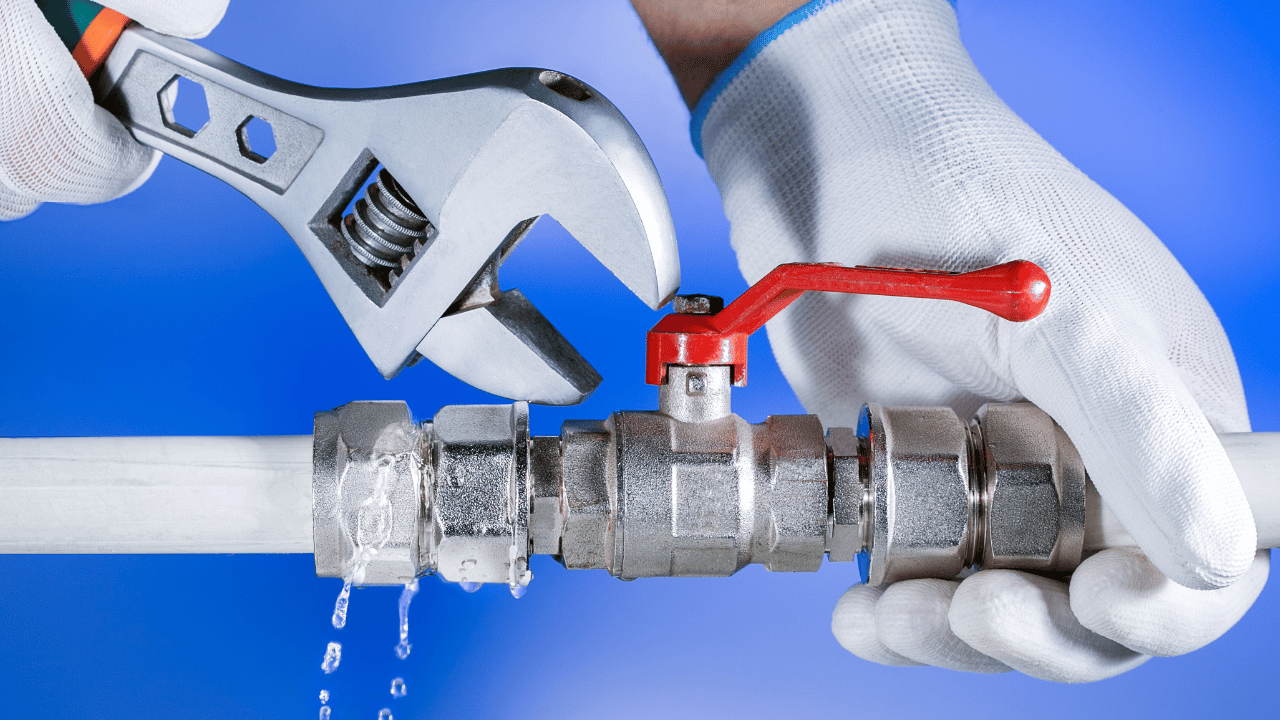
Engaging in DIY plumbing repairs can be both cost-effective and fulfilling. However, the success of such endeavors hinges on meticulous preparation and adherence to best practices.
Key Steps for Effective DIY Repairs:
- Gather Essential Supplies: Before commencing any repair, ensure you have all the necessary tools and supplies on hand.
- Prioritize Safety: Turn off the water supply to avoid potential flooding. Also, protect yourself by wearing safety gear, including goggles and gloves.
- Adherence to Instructions: Methodically follow the given directions and resist the temptation to find shortcuts.
- Anticipate Challenges: Repairs don’t always go as planned. Have a backup plan ready for any unforeseen issues that might arise.
By meticulously planning and staying informed, you can confidently navigate the intricacies of DIY plumbing repairs.
Considerations Before Engaging a Professional Plumber
Should you find yourself in over your head, seeking the expertise of a professional plumber can be invaluable. Making an informed choice when selecting a plumber ensures quality service and peace of mind.
Guidelines for Choosing the Right Plumber:
- Research Multiple Options: Investigate various plumbing services to identify the one best aligned with your needs.
- Verify Professionalism: Ensure that the plumbing service’s employees are both licensed and insured to guarantee quality and accountability.
- Assess Customer Feedback: Delve into online customer reviews to gauge the company’s reputation. Be on the lookout for recurring issues, such as unaddressed complaints or below-par craftsmanship.
- Informed Communication: Being conversant with the specifics of your plumbing issue allows for effective communication. A clear description of the problem facilitates quicker diagnosis and potentially leads to cost savings.
- Insist on Written Estimates: Before commencing any repairs, secure a detailed written estimate. This transparency ensures you understand the cost breakdown and safeguards against unexpected expenses.
By following these guidelines, you can be confident in your selection of a professional plumber and ensure the best outcome for your plumbing needs.
Conclusion
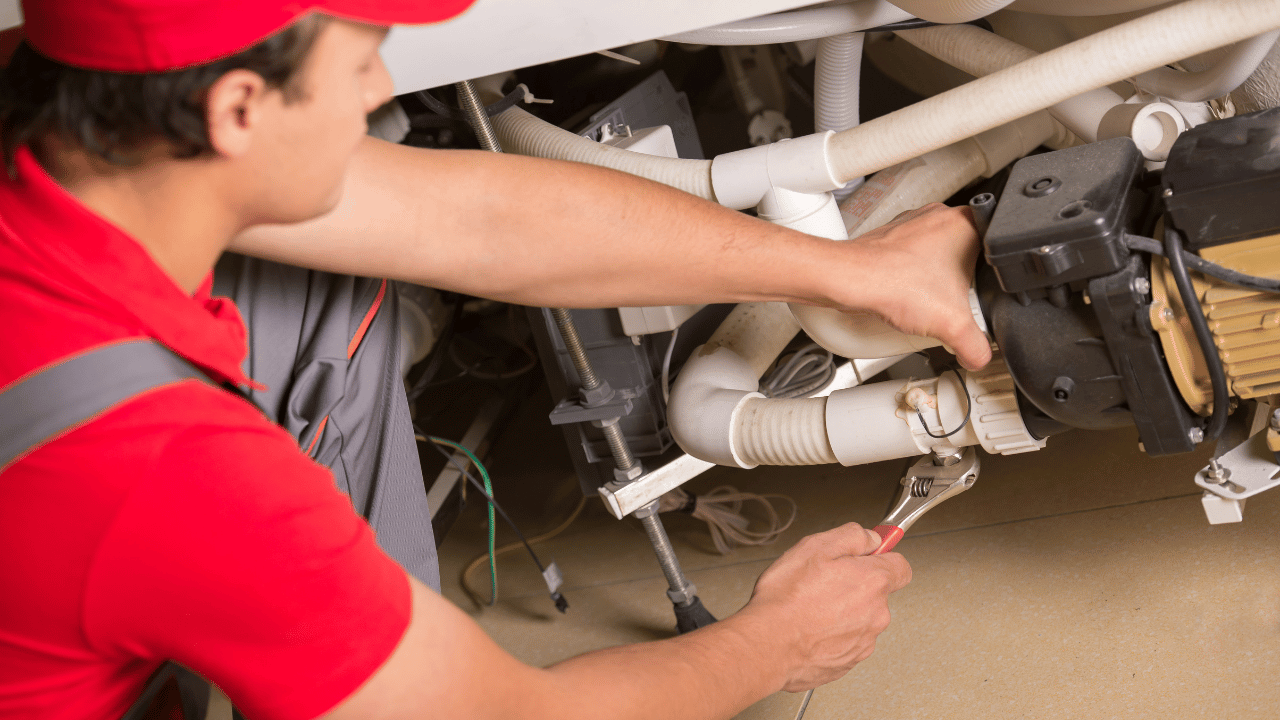
In the complex tapestry of homeownership, plumbing stands as one of the most vital yet often overlooked systems. Common household plumbing problems, from minor faucet leaks to major sewer backups, can disrupt our daily routines and lead to costly repairs if not addressed promptly. As we’ve navigated through the intricacies of these issues, it’s evident that both proactive measures and informed responses are crucial. Equipping oneself with knowledge about these challenges not only aids in quick resolution but also in preventing their recurrence. In the end, understanding the nuances of our home’s plumbing system is not just about fixing problems; it’s about fostering a harmonious living environment and safeguarding the sanctity of our cherished spaces.
